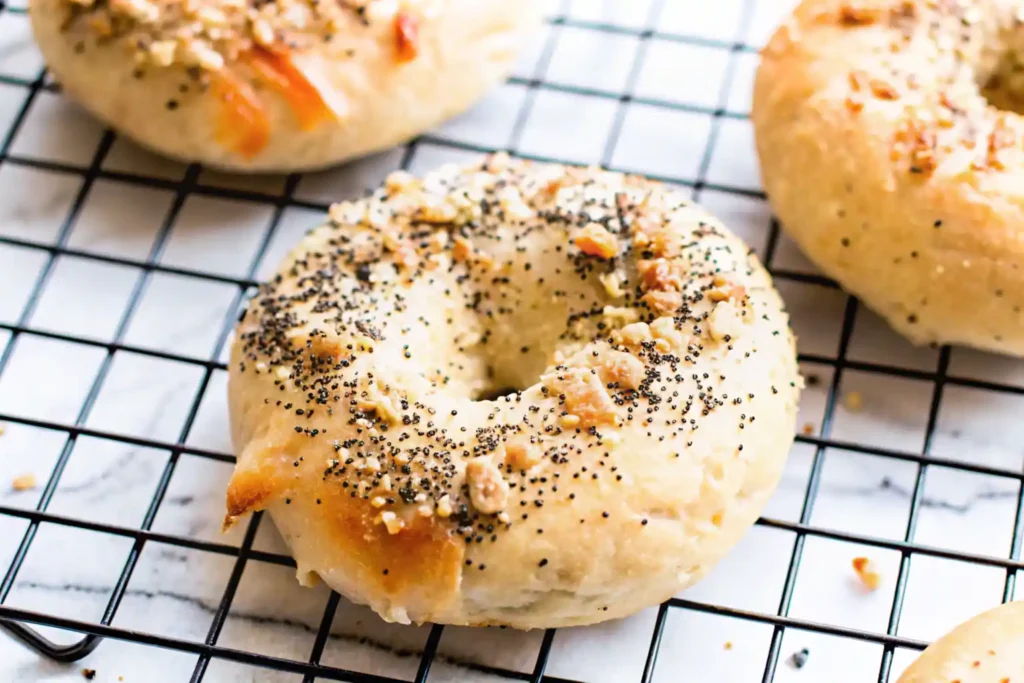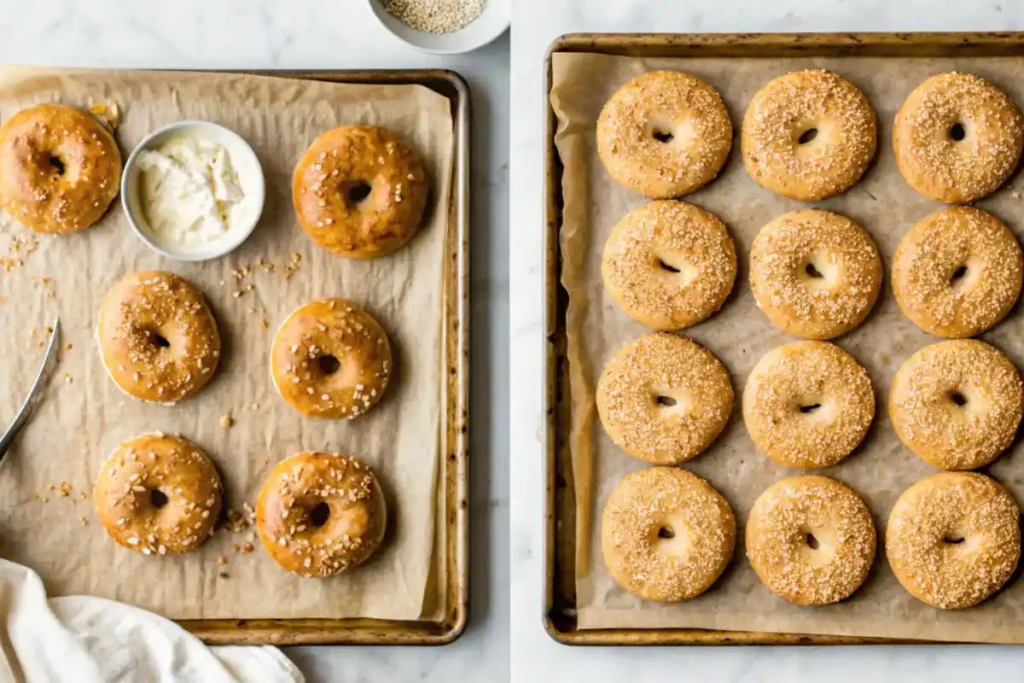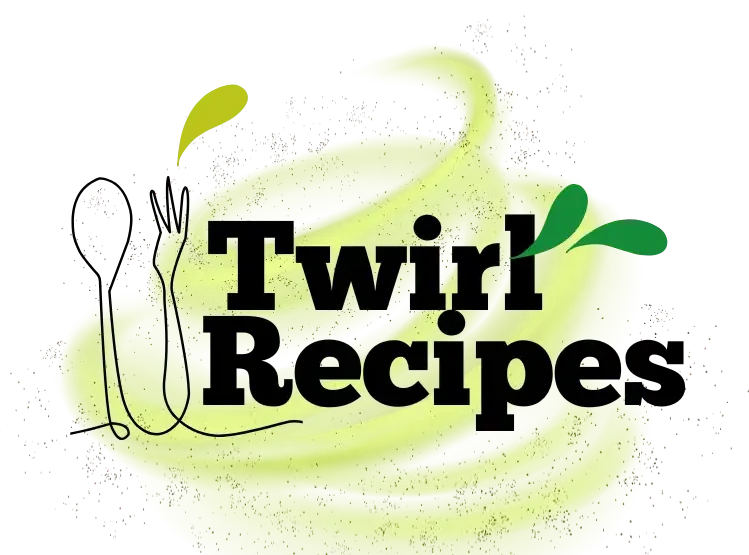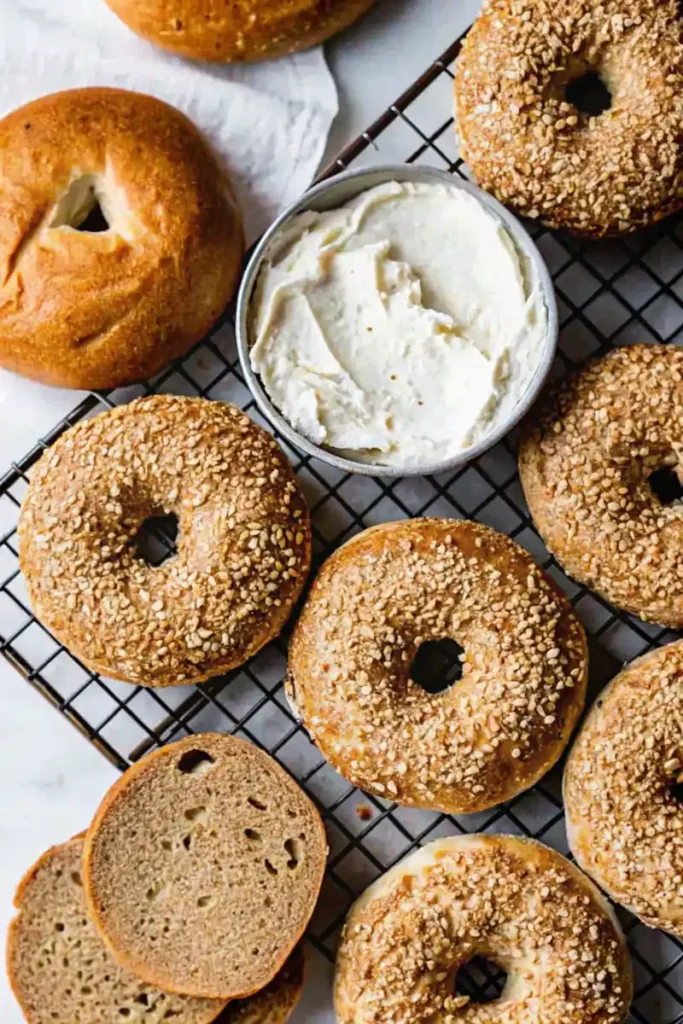There’s nothing quite like a warm, chewy bagel to kickstart your day, but for those avoiding gluten, finding the perfect substitute can be tricky. Don’t worry—gluten-free bagels are here to save the day! These bagels aren’t just a compromise; they’re a celebration of flavor and texture. Whether you’re gluten intolerant, have celiac disease, or just want to explore a healthier alternative, this recipe has you covered.
We’ll walk you through everything, from why you’ll adore these bagels to how to make them from scratch. Plus, we’ll share all the tips and tricks to ensure your homemade gluten-free bagels turn out perfect every time. Ready to make the best gluten-free bagels of your life? Let’s dive in!
JUMP TO
- Why You’ll Love Gluten-Free Bagels
- Health Benefits of Gluten-Free Bagels
- Ingredients You’ll Need
- Detailed Ingredients for Gluten-Free Bagels
- How to Make Gluten-Free Bagels
- Topping Ideas for Gluten-Free Bagels
- How to Store and Freeze Gluten-Free Bagels
- Conclusion
- Frequently Asked Questions about Gluten-Free Bagels
Why You’ll Love Gluten-Free Bagels
The Joy of Bagels Without the Gluten
If you’ve ever thought you’d have to give up bagels after going gluten-free, think again! These bagels deliver all the flavor and chewiness you crave—without the gluten. They’re not just for breakfast; they’re perfect for sandwiches, snacks, or anytime you want to treat yourself.
Perfect for Celiac Disease and Gluten Intolerance
When gluten-free baking is done right, it’s a game-changer. These bagels are crafted specifically to cater to those with celiac disease or gluten intolerance, making them a safe and tasty option. No need to miss out on this classic comfort food!
Healthier Alternative to Traditional Bagels
Gluten-free bagels often incorporate nutrient-packed flours like almond flour or tapioca starch, which are not only lighter on the stomach but also bring added health benefits. You can even make them dairy-free if needed—more on that later!
Endless Topping Possibilities
From a classic spread of cream cheese to creative combos like avocado and smoked salmon, these bagels are your canvas.
Health Benefits of Gluten-Free Bagels
Are Gluten-Free Bagels Healthy?
Absolutely! Gluten-free bagels are not just an alternative for those avoiding gluten; they can be a healthier option for everyone. By using nutrient-dense ingredients like almond or rice flour, these bagels provide essential vitamins and minerals. Plus, they’re typically easier to digest than traditional bagels, making them a win-win for your stomach and taste buds.
Reduced Inflammation and Digestive Relief
For individuals with gluten sensitivity or celiac disease, eating gluten can trigger inflammation and digestive discomfort. Switching to gluten-free bread options, like these bagels, helps reduce bloating, cramps, and other unpleasant symptoms. Even if you don’t have gluten intolerance, these bagels can be lighter on your gut, keeping you feeling great all day.
Great for Weight Management
While traditional bagels can be calorie-dense and packed with refined carbs, gluten-free versions often use flours like almond flour, which are lower in carbs and higher in healthy fats. This balance can help with weight management by keeping you full longer without a sugar crash later.
Packed with Nutritional Alternatives
Thanks to the variety of gluten-free flours available, these bagels can be customized to fit your nutritional needs. Want more protein? Use chickpea or quinoa flour. Looking for fiber? Incorporate oat flour. Gluten-free doesn’t mean flavor-free—it means getting creative with healthier ingredients.

Ingredients You’ll Need
Creating gluten-free bagels requires a few staple ingredients to achieve that perfect texture and flavor. While the ingredient list might look a little different from traditional recipes, every element plays an important role in bringing these bagels to life. Here’s what you’ll need:
- Gluten-Free Flour Blend: Look for a high-quality blend that combines rice flour, tapioca starch, and potato starch. This combination provides structure while keeping the bagels soft and chewy.
- Xanthan Gum: Essential for binding the dough together, as gluten-free flours lack elasticity.
- Yeast: Adds that classic bagel flavor and helps the dough rise beautifully.
- Sugar or Honey: A little sweetness to activate the yeast and balance the flavors.
- Warm Water: Necessary for activating the yeast and hydrating the dough.
- Salt: Enhances the overall flavor of the bagels.
- Oil or Butter: Adds moisture and richness to the dough.
Gluten-Free Flours to Consider
If you want to experiment, there are plenty of flour options to try:
- Almond Flour: Adds a nutty flavor and healthy fats.
- Oat Flour: Boosts fiber content and creates a heartier texture.
- Chickpea Flour: Offers a protein-rich twist for a more nutritious bagel.
Yeast-Free vs. Yeast-Based Recipes
While yeast is traditional, you can make gluten-free bagels without it. A yeast-free version uses baking powder for a quicker rise and is ideal for those short on time. However, yeast-based bagels deliver a more authentic texture and flavor, so the choice depends on your preference.
Flavor Additions: Spices, Seeds, and Sweeteners
The fun part about making gluten-free bagels is customizing them to your liking. Want a savory option? Add garlic powder, onion flakes, or everything bagel seasoning. Prefer something sweet? Mix in cinnamon, raisins, or a touch of maple syrup.
For a creative gluten-free alternative, try pairing these bagels with your favorite spreads. Check out our guide to making cottage cheese flatbread for even more gluten-free inspiration!
Detailed Ingredients for Gluten-Free Bagels
Here’s a comprehensive list of ingredients you’ll need to make gluten-free bagels at home. These quantities will yield about 6 medium-sized bagels. Adjust as needed for your batch size or flavor preferences.
Base Ingredients
- 2 ¾ cups gluten-free flour blend (preferably one with rice flour, tapioca starch, and potato starch for best results)
- 1 ½ teaspoons xanthan gum (skip if your flour blend already includes it)
- 1 tablespoon sugar (or substitute with honey or maple syrup for natural sweetness)
- 1 ¼ teaspoons salt (to enhance the overall flavor)
- 2 teaspoons instant yeast (or active dry yeast; see notes for activation tips)
- ¾ cup warm water (about 110°F to activate the yeast)
- 1 tablespoon oil (olive oil, avocado oil, or melted butter works great)
Optional Additions
- 1 teaspoon garlic powder or onion powder (for a savory twist)
- 1 teaspoon cinnamon (for a sweet bagel variation)
- 2 tablespoons raisins, dried cranberries, or chocolate chips (for a fun flavor boost)
Toppings
- Everything Bagel Seasoning (a mix of sesame seeds, poppy seeds, dried garlic, dried onion, and salt)
- Sesame Seeds (white or black, for a classic topping)
- Sea Salt Flakes (for a simple but flavorful finish)
- Cinnamon Sugar Mix (for a sweet topping option)
For Boiling
- 8 cups water (enough to submerge the bagels while boiling)
- 2 tablespoons sugar (optional, for a slightly glossy and sweeter crust)
For Brushing
- 1 egg, beaten (for a shiny finish; skip or use plant-based milk for a vegan version)
How to Make Gluten-Free Bagels
Making gluten-free bagels from scratch might seem intimidating, but it’s easier than you think! With a bit of patience and the right technique, you’ll achieve bakery-quality results at home. Here’s a foolproof guide to help you every step of the way.
Preparing Your Dough
- Activate the Yeast: In a small bowl, combine warm water (about 110°F) and a teaspoon of sugar. Sprinkle the yeast on top and let it sit for 5-10 minutes until it becomes foamy. This step is crucial for ensuring your bagels rise.
- Mix Dry Ingredients: In a large mixing bowl, whisk together your gluten-free flour blend, xanthan gum, and salt. This ensures even distribution of the dry components.
- Combine Wet and Dry: Gradually pour the yeast mixture and a tablespoon of oil or melted butter into the dry ingredients. Mix until the dough comes together. It should be slightly sticky but not too wet. Add a little more flour if needed.
Shaping and Boiling the Bagels
- Shape the Bagels: Divide the dough into equal portions (about 6-8 pieces, depending on your desired size). Roll each piece into a ball and poke a hole in the center using your finger, gently stretching to create the classic bagel shape.
- Boil for Texture: Bring a large pot of water to a boil and add a tablespoon of sugar or honey. Boil each bagel for 30 seconds per side. This step gives bagels their chewy texture and shiny crust.
Baking for Perfection
- Preheat the Oven: Set your oven to 425°F (220°C) and line a baking sheet with parchment paper.
- Add Toppings: Brush each bagel with an egg wash or a dairy-free alternative, then sprinkle your favorite toppings—sesame seeds, poppy seeds, or cinnamon sugar.
- Bake Until Golden: Place the bagels on the prepared baking sheet and bake for 20-25 minutes or until they’re golden brown. Let them cool slightly before serving.

Common Mistakes and How to Avoid Them
- Too Dry Dough? Add a splash of water to improve consistency.
- Flat Bagels? Ensure your yeast is properly activated and the dough is not overworked.
- Tough Texture? Avoid skipping the boiling step—it’s a must for achieving that chewy bagel bite!
Topping Ideas for Gluten-Free Bagels
Delicious and Healthy Topping Suggestions
Now that you’ve mastered the art of making gluten-free bagels, it’s time to get creative with toppings! The beauty of bagels is their versatility—you can go sweet, savory, or somewhere in between. Here are some ideas to inspire your culinary imagination.
Classic Options: Cream Cheese and Smoked Salmon
- Cream Cheese: A timeless choice. Opt for a dairy-free cream cheese if you’re avoiding lactose. Add a sprinkle of chives or a dash of black pepper for extra flavor.
- Smoked Salmon: Layer thin slices of smoked salmon, capers, and a squeeze of lemon for a sophisticated twist.
Sweet and Savory Combos: Nut Butter and Banana
- Nut Butter: Almond butter, peanut butter, or sunflower seed butter pair beautifully with gluten-free bagels.
- Banana Slices: Top your nut butter with banana slices and a drizzle of honey or maple syrup for a sweet, protein-packed breakfast.
Vegan-Friendly Options
- Avocado Smash: Mash up some ripe avocado, season with salt, pepper, and a squeeze of lime. Add cherry tomato slices for a burst of flavor.
- Hummus Spread: Use creamy hummus as a base, then top with roasted veggies like red peppers or zucchini.
Make It Unique with a Blend of Sweet and Crunchy
- Berry Medley: Spread cream cheese (or a vegan alternative) and layer fresh strawberries, blueberries, or raspberries on top. Sprinkle with chia seeds for a boost of nutrition.
- Cinnamon and Honey: Butter your bagel, sprinkle with cinnamon, and drizzle honey for a comforting, dessert-like treat.
Experimenting with Everything Bagel Seasoning
If you’re a fan of bold flavors, sprinkle everything bagel seasoning—a mix of sesame seeds, poppy seeds, garlic, and onion—over cream cheese or avocado. The salty, garlicky kick complements almost any topping.
These toppings transform your bagels into a masterpiece of flavors, offering endless creative possibilities. Pair them with a soothing chai latte or a refreshing green tea with matcha for a perfectly balanced and delightful treat.
How to Store and Freeze Gluten-Free Bagels
Keeping Your Bagels Fresh
Freshly baked gluten-free bagels are best enjoyed within the first day or two, but proper storage can extend their shelf life. Follow these tips to keep them tasting as good as the moment they came out of the oven:
- Room Temperature: Store cooled bagels in an airtight container or a resealable plastic bag. Add a paper towel to absorb excess moisture and prevent sogginess.
- Refrigeration: While refrigeration isn’t ideal for regular bread, gluten-free bagels hold up well in the fridge. Wrap them tightly in plastic wrap or foil and consume within three days.
Freezing Instructions for Long-Term Use
If you’ve made a big batch of gluten-free bagels or want to save some for later, freezing is your best option. Properly frozen bagels can last up to three months without losing quality. Here’s how to do it:
- Cool Completely: Ensure the bagels are completely cooled before freezing to avoid ice crystals forming.
- Wrap Individually: Wrap each bagel tightly in plastic wrap, then place them in a freezer-safe bag or container. This prevents freezer burn and keeps the bagels fresh.
- Label and Date: Write the date on the container so you’ll know how long they’ve been stored.
Reheating to Retain Flavor
Frozen bagels can taste just as fresh if you reheat them properly. Here’s how to bring them back to life:
- Toaster or Toaster Oven: Slice the bagel in half and toast until warmed through and slightly crispy.
- Oven: Preheat to 350°F, wrap the bagel in foil, and heat for about 10 minutes. For extra crispiness, unwrap it for the final two minutes.
- Microwave: While not ideal for texture, a quick 15-20 second zap on low power can work in a pinch.
Conclusion
Making gluten-free bagels at home is a rewarding and delicious experience. With the right ingredients, a little practice, and the tips shared in this guide, you can create bagels that rival those from your favorite bakery. They’re chewy, flavorful, and perfect for any occasion—whether you’re enjoying a quiet breakfast or prepping for a busy week.
These bagels not only cater to gluten-free diets but also open up opportunities to explore healthier, nutrient-packed alternatives. Plus, the endless topping combinations ensure you’ll never get bored. From savory spreads to sweet additions, your homemade creations are sure to delight.
Frequently Asked Questions about Gluten-Free Bagels
What are gluten-free bagels made of?
Gluten-free bagels are made using a blend of gluten-free flours such as almond flour, rice flour, or tapioca starch. Ingredients like xanthan gum or psyllium husk are used as binders to replicate the elasticity and chewiness of traditional bagels. The recipe also includes yeast, sugar, and salt for flavor and structure.
Are gluten-free bagels healthier than regular bagels?
It depends on the recipe, but gluten-free bagels can often be a healthier choice. Many versions use nutrient-dense flours that are higher in fiber, protein, or healthy fats. Plus, they’re free of gluten, making them easier to digest for those with sensitivities or celiac disease.
How do gluten-free bagels taste compared to traditional bagels?
When made correctly, gluten-free bagels are delightfully chewy and flavorful, just like their traditional counterparts. They might have a slightly different texture depending on the type of flour used, but a good recipe ensures minimal differences.
Can I make gluten-free bagels without yeast?
Yes, you can! Yeast-free gluten-free bagels use baking powder as a leavening agent. While they don’t have the same depth of flavor as yeast-based bagels, they’re quicker to make and still delicious.

